[#Cooking Tips] ~ Cooking Tips / Bacic : From a Professional Chef
In addition, given the galactic expense of eating out, it pays to figure out how to make a mean feast in your own one of a kind kitchen. So I will show you all that you have to think about these basic strategies, including the nourishments they work best with, the must-have outfit, and the straightforward yet tasty seasonings to include.
Simmering [Roasting]
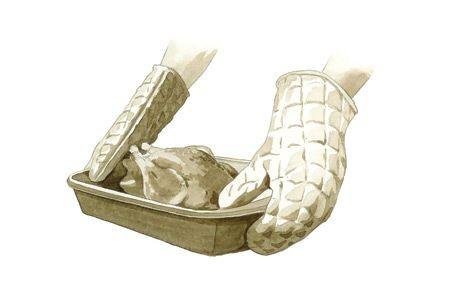
This system cooks nourishment at high temps utilizing encompassing warmth (an extravagant method for saying that the sustenance is encompassed by dry warmth, rather than being warmed from beneath on a stovetop).
Advantages
This is the way gourmet specialists get that brilliant covering that looks so inviting. Cooking caramelizes the sugars in meats and vegetables, building up their characteristic sweetness, so it's an incredible method to improve enhance without including calories. Furthermore, on the grounds that the broiler does basically everything, next to no prep is required.
Best for
Whole chicken, meat or pork meal, and greasy fish like salmon. With respect to vegetables, heartier is better: potatoes, sweet potatoes, carrots, parsnips, and squash. Since they take more time to cook, their sweetness has room schedule-wise to create without their overcooking. This isn't to imply that asparagus, peppers, zucchini, and tomatoes can't be simmered; simply watch out for them, since they can consume effortlessly. For a sweet treat, broil natural products, for example, bananas, pineapples, or simply ready peaches (on the off chance that they're finished or under-ready, they won't cook well). Prior to simmering, coat them with a dash of liquefied margarine or canola oil and a sprinkling of sugar.
You require
A cooking container (or any dish whose sides are somewhere around a couple of inches down). Furthermore, in case you're making chicken, hamburger, or pork, you'll likewise need to have an advanced meat thermometer.
The most effective method to do it
Preheat the broiler to 400°F. Gently coat fixings with olive oil and season with salt, pepper, and your most loved dried herbs. Utilize the computerized thermometer to decide when meats are finished. Foods grown from the ground are prepared when they begin to dark colored outwardly and within is delicate.
Tip
What's the distinction among broiling and heating? Both utilize surrounding heat, however preparing cooks sustenance all the more gradually, at temps 350°F and underneath.
Broiling
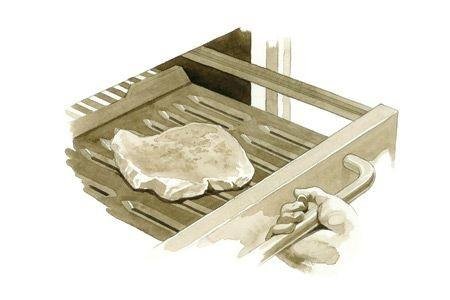
In this technique, you put nourishment specifically under uncovered high warmth. Individuals modest far from this strategy since it will in general set off the smoke alert.
Advantages
It gives nourishment a fresh surface yet keeps it soggy and succulent inside without including much oil or fat.
Best for
Thin cuts of meat or fish that will cook rapidly and taste incredible with a brilliant dark colored outside. Think flank or skirt steaks, sheep or pork cleaves, and a wide range of fish.
You require
If your stove doesn't have a worked in oven, you can utilize a grill container, which has an opened best layer that enables the fat to trickle to the dish beneath. In any case, I incline toward a wire rack over a preparing sheet, which spares you from purchasing another skillet and completes a superior employment of getting that impeccably dark colored outside layer with a delicate focus.
Step by step instructions to do it
All meat needs is a dash of salt and newly ground pepper; angle gets a sprinkle of olive oil, a press of lemon, and a sprig of thyme. Set the grill to high; if your stove doesn't have a worked in oven, put the rack with the goal that the container is eight creeps underneath the warming component. The thickness of the cut and how well-done you like your meat will decide to what extent to abandon it in (it'll run from three minutes for every side for a thin uncommon steak to nine minutes for every side for a thick well-completed one). Your smoke alert will begin shouting on the off chance that you put the meat excessively near the component for a really long time, so don't leave the kitchen for over a moment.
Tip
Because cooking requires high warmth, preheat the oven totally before you put in your protein.
Sautéing
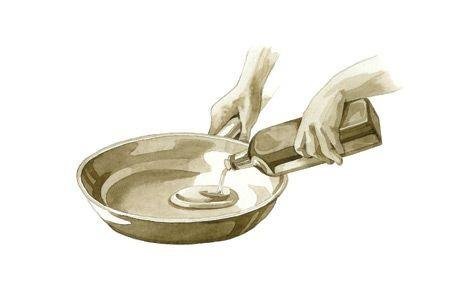
Otherwise called sautéing, this system includes always hurling or blending the nourishment with a little measure of oil or margarine over high warmth.
Advantages
This speedy cooking strategy protects nourishment's regular flavor, surface, and shading.
Best for
Naturally delicate cuts, for example, meat tenderloin, angle filets, or chicken bosom (harder cuts require excessively cooking time) and speedy cooking vegetables, for example, asparagus, peppers, broccoli, onions, sugar-snap peas, and mushrooms.
You require
A 10-to 12-inch nonstick container (sufficiently enormous so the sustenance isn't swarmed, which moderates cooking); silicone spatulas or whatever other nonmetal utensils that won't scratch your nonstick.
Step by step instructions to do it
Add simply enough oil to coat container, at that point warm over medium-high for a moment or two preceding hurling in your fixings. Before including all fixings, test the warmth level with a solitary piece; it should sizzle when it hits the skillet. (On the off chance that you include it too soon, the sustenance will discharge its fluid and your dish will turn out saturated.) Cook over medium-high warmth, hurling every now and again; for to what extent relies upon what you're making. On the off chance that you're cooking a blend of sustenances, dark colored your meat first, include aromatics (garlic, onions) and vegetables.
Tip
When cleaving for a sauté, cut everything into consistently estimated pieces so your sustenance cooks uniformly and at a similar rate.
Bubbling [Boiling]
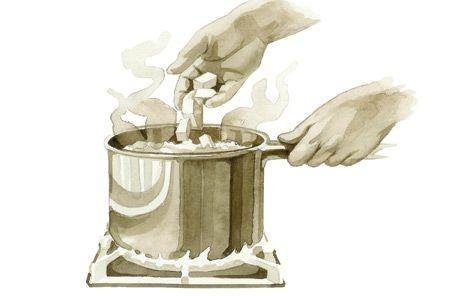
It may not sound provocative, but rather it's an attempted and-genuine system (and a damn simple one) that gives you a chance to turn out solid soups, pastas, and even meats and vegetables in a snap.
Advantages
It's a quick method to cook sustenance, and since you're utilizing just water, you're not including fat or calories.
Best for
Pasta, chicken, and eggs. For vegetables, complete a glimmer heat up (that is the point at which you drop the fixings into bubbling water for close to two minutes) to keep their surface and supplements unblemished.
You require
A huge pot or pan with a top, in addition to a colander.
The most effective method to do it
Fill pot with water, include a touch of salt, and place over high warmth. Cover to speed bubbling time. Pasta or vegetables, for example, broccoli and spinach do best on high warmth in a snappy, moving bubble. Soups, sauces, and generous vegetables, for example, potatoes and carrots yield the most flavor and delicacy with a moderate stew. To cook chicken, cover with water and include veggies or herbs; cover pot and heat to the point of boiling, at that point lower to stew for a hour and a half. Also, don't try placing oil in pasta water—it doesn't forestall staying. Rather, hurl pasta with a tablespoon of olive oil after you've depleted it.
Braising
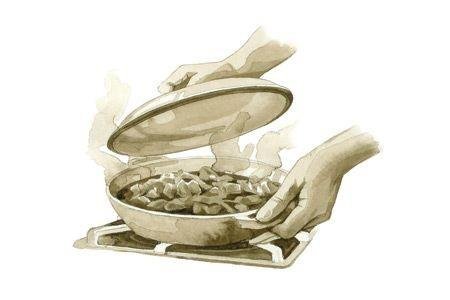
In this strategy, you cook a nourishment (typically meat) in a tasty fluid, for example, juices or stock over low warmth for a few hours. Since braising is tedious, it is anything but a method to use on the fly after work. Be that as it may, trust me, it merits the pause.
Advantages
Succulent, soften in-your-mouth dinners that completely shout with flavor.
Best for
Dark-meat chicken still on the bone (legs and thighs), pork shoulders, or hamburger hurl broils (pot cooks). Fundamentally, search for any cut of meat in which you can see particular veins of fat; moderate cooking the meat in fluid until the point when that fat separates is the thing that makes it so delicate. Including vegetables balances the flavor, yet since they'll be cooking for significant lots of time in fluid, pick solid ones that have thick tissue, similar to carrots and potatoes.
You require
An extensive, substantial lacquer or cast-press pot with a cover. On the off chance that you don't have a cover, you can make a tent with aluminum thwart.
Step by step instructions to do it
Brown the meat in a pot on the stovetop, at that point include your vegetables and pour in enough fluid to achieve most of the way to 66% up the meat; cover. Any fluid will do, however the most effortless to utilize is stock. Match a low-sodium form with your primary fixing (hamburger stock for meat, etc); if all else fails, utilize chicken stock. Herbs and flavors will implant the feast with flavor when added to the braising fluid, and you can likewise include different fluids, for example, brew or wine. Stew over low warmth or in the stove at a low temperature, keeping the pot secured. You don't need to turn the meat, however on the off chance that you need, you can do as such part of the way through. Cook hamburger and different meats for a hour to 90 minutes for each pound; for an entire chicken, rely on 45 minutes.
Tip
Keep parts to close to 3 ounces for every serving—the best meats for braising are brimming with fat.
Photo Source : www.google.com
That's the basic cooking tip, hopefully it can be useful for all your lover lover ... let's cook with love :)
Regards

